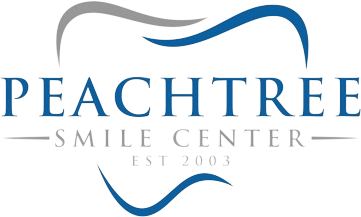As a dental hygienist with years of experience, I’ve performed thousands of professional cleanings and understand that knowing what to expect helps put patients at ease. The most common question I hear is about how long the cleaning will take, and I’m here to give you a detailed breakdown.
A dental cleaning is more than just keeping your smile bright – it’s a crucial part of your overall health maintenance. I’ll walk you through everything from basic cleanings to more intensive procedures, helping you understand exactly what happens during your time in the dental chair.
Understanding Dental Cleanings
A dental cleaning is a professional procedure where I remove plaque, tartar, and stains from your teeth using specialized tools and techniques. During this process, I carefully clean both above and below your gum line, removing harmful bacteria that your regular brushing and flossing can’t reach. This preventive care is essential for maintaining healthy teeth and gums, and typically involves scaling, polishing, and a protective fluoride treatment.
Signs You Need a Dental Cleaning
- Visible Tartar Buildup: If you notice yellow or brown deposits along your gum line, these are calcified plaque deposits that only professional dental cleaning can remove.
- Bleeding Gums: When your gums bleed during brushing or flossing, it’s often a sign of gingivitis, indicating you’re overdue for a professional cleaning.
- Persistent Bad Breath: Chronic bad breath that persists despite good oral hygiene can indicate bacterial buildup that requires professional attention.
- Teeth Staining: Yellowing teeth or stubborn stains that won’t go away with regular brushing often need professional cleaning to restore their natural appearance.
- It’s Been Over 6 Months: Even if you don’t notice any issues, regular professional cleanings every six months are crucial for preventing oral health problems.
Dental Conditions Linked with Lack of Professional Cleanings
Gingivitis
Gingivitis is the earliest stage of gum disease, characterized by red, swollen gums that may bleed easily. When you skip regular professional cleanings, bacteria in plaque build up along your gum line, causing inflammation. Without professional intervention, this condition can progress to more serious forms of periodontal disease.
Associated Risks:
- Chronic gum inflammation
- Gum recession
- Bad breath
- Potential progression to periodontitis
- Increased risk of tooth loss
Periodontitis
Periodontitis is an advanced form of gum disease that develops when gingivitis goes untreated. This serious condition affects the bones that support your teeth and can lead to tooth loss. Without regular dental cleanings, harmful bacteria can create deep pockets between your teeth and gums, destroying vital tissue.
Associated Risks:
- Permanent bone loss
- Loose teeth
- Chronic bad breath
- Systemic health issues
- Need for extensive dental surgery
Tooth Decay
When regular dental cleanings are neglected, plaque accumulation leads to increased acid production by bacteria, resulting in tooth decay. These cavities can progress quickly without professional intervention, potentially reaching the tooth’s nerve and requiring root canal therapy.
Associated Risks:
- Painful cavities
- Need for fillings or crowns
- Possible tooth abscess
- Root canal requirements
- Complete tooth loss if untreated
Your Personal Guide to the Dental Cleaning Process
Initial Examination (5-10 minutes)
Before beginning any dental cleaning, I perform a thorough examination of your mouth, teeth, and gums. Using a small mirror and specialized tools, I check for signs of gingivitis, cavities, or other concerning issues that might require special attention during the cleaning. I also review your dental history and discuss any specific concerns you may have, ensuring I provide the most appropriate care for your situation.
Step-by-Step Procedure (30-45 minutes)
- Physical Examination (5 minutes): I use a small mirror to check your teeth and gums for any obvious issues or areas that need special attention during the cleaning.
- Plaque and Tartar Removal (15-20 minutes): Using a scaler, I carefully remove plaque and tartar buildup from both above and below your gum line, working on each quadrant of your mouth systematically.
- Deep Cleaning with Ultrasonic Tools (10-15 minutes): For stubborn deposits, I use an ultrasonic cleaner that sprays water while vibrating to loosen and remove debris and stains.
- Expert Polishing (5-7 minutes): Using a special polishing tool and gritty toothpaste, I thoroughly clean and smooth your teeth’s surfaces, removing any remaining debris and light staining.
- Professional Flossing (3-5 minutes): I perform a deep flossing session, reaching areas that might be missed during regular flossing and checking for any potential bleeding points.
- Fluoride Treatment (5 minutes): As a final step, I apply a fluoride treatment to help protect your teeth against cavities for several months.
A typical dental cleaning takes between 30 to 60 minutes, depending on your oral health and the amount of buildup present. For most patients, I recommend scheduling cleanings every six months to maintain optimal oral health. However, if you have periodontal disease or other specific conditions, I might suggest more frequent visits, typically every three to four months.
How to Do Dental Cleanings at Home
While professional dental cleanings are essential, your daily oral hygiene routine is equally crucial for maintaining healthy teeth and gums. As your dental hygienist, I can’t stress enough that what you do at home between cleanings significantly impacts your oral health. Regular home care prevents plaque buildup, reduces the risk of cavities, and helps maintain the results of your professional cleaning.
- Morning Brush: Use a soft-bristled toothbrush and fluoride toothpaste, brushing in circular motions at a 45-degree angle to your gums.
- Evening Brush: Repeat your morning routine, paying extra attention to any areas where plaque tends to accumulate.
- Daily Flossing: Use about 18 inches of floss, wrapping it around your middle fingers and gently sliding between each tooth in a C-shape motion.
- Mouth Rinse: Use an antiseptic mouthwash to help reduce bacteria and freshen your breath, swishing vigorously for at least 30 seconds.
- Tongue Cleaning: Use a tongue scraper or your toothbrush to clean your tongue from back to front, removing bacteria that cause bad breath.
Conclusion
Regular dental cleanings are your first line of defense against oral health issues, and knowing what to expect helps make the experience more comfortable. As a dental hygienist, I’m committed to providing you with the best possible care and education to maintain your oral health between visits.
Ready to schedule your next dental cleaning? Visit Peachtree Smile Center, where we provide comprehensive dental care in a comfortable, modern environment. Follow us on Facebook, Instagram, and TikTok for daily oral health tips, and check out our satisfied patient reviews on Yelp and NextDoor. Your healthy smile journey starts with just one appointment!



